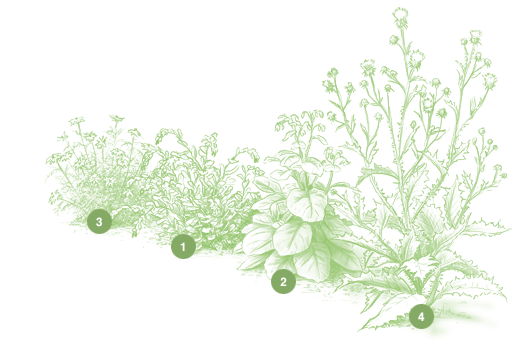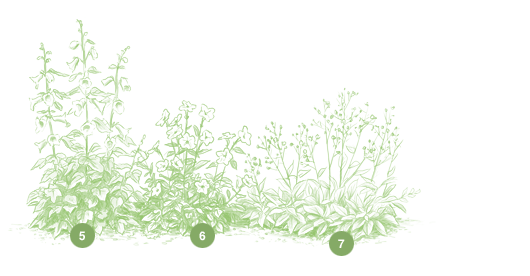The Savage Garden
Natural process distinguishes landscape design from other arts; the living materials of landscapes grow, mature, and decline. A plant's ability to reproduce and seed into an area, whether a garden or a crack in the sidewalk, is one expression of natural process, and many landscape architects have based designs on the “wild” growth patterns of plants. Gilles Clément's Jardin en Mouvement in Parc André Citroen, Paris, consists of plants that establish visual patterns based on complex factors including vigor, growth habit, weather, and prevailing winds. Such seemingly impromptu landscapes engage us with their interplay of the cultivated and the natural. We gain a heightened awareness of our place in the natural world by viewing these jardins sauvages, even—or perhaps especially—when they are found in an urban context.
Hardly a revolutionary horticultural practice, the jardin sauvage is based in part on permitting unplanned growth, such as that of self-seeding flowers that find their own cultural niche. Annual plants are the most transient elements incorporated into gardens, usually employed pragmatically for some summer color. Their botanical adaptation is to produce enough seed to perpetuate the species for another year, and some do this better than others, with lessons gleaned from trial and error. Some annuals are unwelcome in any setting, like chickweed and Galinsoga species, otherwise known as quickweed (and for good reason). Others are deemed ornamental and are allowed to remain from year to year to enrich a more permanent structure of shrubs and perennials. Some annuals prefer cool weather to summer heat and resprout in autumn from seed set in the spring, such as Cerinthe major var. purpurascens, a Mediterranean native with speckled, bluish foliage and small tubular purple flowers. Bluewing (Torenia fournieri), bloodflower (Asclepias curassavica), Balfour's touch-me-not (Impatiens balfourii), blood sage (Salvia coccinea), and purpletop vervain (Verbena bonariensis) are just a few plants that appear every year with varying occurrence if their seeds are allowed to ripen on the plants and disperse.
Giving way to natural process in the garden can be liberating—both in theory and in practice. Dedicate a border to a loosely planned jardin sauvage and then sit back and await its surprises.

Cool-Season Plants
- Honeywort: Cerinthe major var. purpurascens
- Borage: Borago officinalis
- Love-in-a-mist: Nigella damascena
- Scotch thistle: Onopordum acanthium (biennial)

Warm-Season Plants
- Bush violet: Browallia americana
- Wild foxglove: Ceratotheca triloba
- Jewels of Opar: Talinum paniculatum
Due to the prolific nature of seed produced by annuals, check the invasive plant list of your region before planting.


